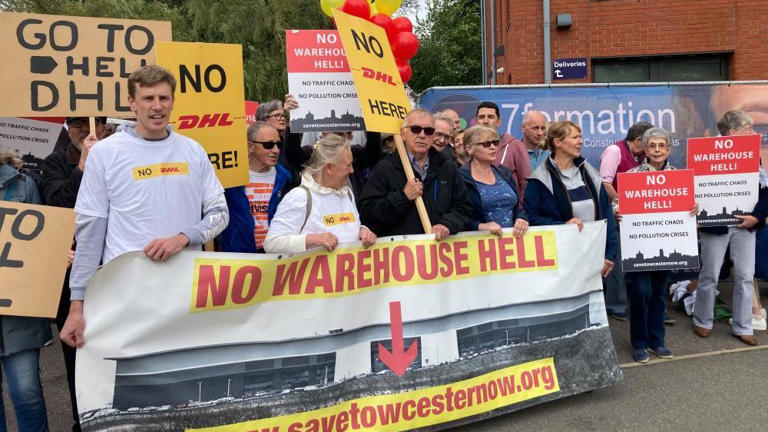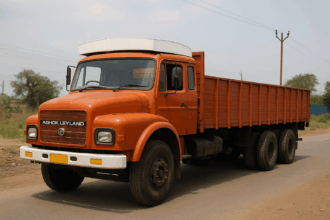DHL has appealed the rejection of its plans for a large logistics hub on the outskirts of Towcester, Northamptonshire. The 32-hectare site, designated for a new warehouse, faced strong opposition from local residents and councilors. Despite the rejection, DHL remains committed to pushing forward with the project, which it asserts will create thousands of jobs and bring significant economic benefits to the area.
Traffic and Scale Concerns Spark Backlash
One of the main reasons for the rejection was the predicted traffic chaos the development could cause. Residents, particularly those living near the site, fear that the increase in heavy goods vehicles and staff commuting to the warehouse will overwhelm local roads. Towcester, a small historic town, already struggles with traffic congestion, and the new development would exacerbate this issue.
In addition to the traffic concerns, local campaigners raised objections over the sheer scale of the project. The proposed warehouse is massive, and many argue it would drastically alter the town’s character. Save Towcester Now, a local group with more than 1,400 followers on social media, voiced strong opposition. They claim the project would irreparably change Towcester’s historic charm and significantly impact the quality of life for local residents.
Economic Impact and Job Creation
In defense of the proposal, DHL argues that the project would generate significant economic benefits. The logistics hub is expected to create around 1,300 new full-time jobs, providing a major boost to the local economy. DHL also estimates that the warehouse would increase wage generation in the area by approximately £50 million annually. For many supporters, these job opportunities are an important factor in securing the region’s economic future.
However, critics question the need for such a large warehouse in this specific location. Some argue that the demand for warehousing in the area might not justify the environmental and social costs. They are concerned that the warehouse could be the first of many, leading to more industrial developments in an area traditionally known for its rural and historic character.
Council Rejects the Plans
In September, West Northamptonshire Council voted to reject DHL’s planning application, going against the advice of its officers. While the officers had recommended approval, citing the potential economic benefits and job creation, the council was swayed by concerns about the visual impact of the site and the strain it could place on the local infrastructure.
The council’s decision cited significant worries about the impact on traffic in Towcester, especially by 2031, when traffic flows are predicted to increase further. There was also concern about the site’s proximity to the town’s historic buildings, which many felt would be overshadowed by the scale of the proposed development.
Appeal to Planning Inspectorate
Despite the rejection, DHL has chosen to appeal the decision. The case will now be reviewed by the government’s planning inspectorate, who have the authority to overturn the council’s decision. If the appeal is successful, the logistics hub could still go ahead. The planning inspectorate will hear evidence from both the local authority and the developers in a formal inquiry set for February 2025. All relevant evidence from both sides is due to be submitted by January 2025.
For now, the future of the Towcester warehouse remains uncertain. The appeal process will determine whether the plans can move forward or whether the council’s decision will stand. In the meantime, local residents and campaigners continue to voice their opposition, while DHL maintains that the project is vital for the area’s economic growth.
A Town at a Crossroads
Towcester is at a crossroads. The appeal will decide whether the town will embrace a large-scale industrial project that could bring jobs and investment or resist it to preserve its character and quality of life. The outcome will have long-lasting effects, not only for Towcester but for other small towns across the UK facing similar challenges. As both sides prepare for the upcoming inquiry, it remains to be seen which vision for the future will prevail.







